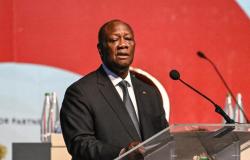Global demand for oil is clearly increasing, according to the CEO of the British group British Petroleum (BP), who forecasts high oil consumption in the five to ten years to come.
According to Murray Auchincloss, who spoke at the “Energy Intelligence forum” held in London, “the demand for oil continues to surprise us on the rise, increasing on average by more or less 1% each year”.
BP announced a few weeks ago that it wanted to abandon its objective of reducing its oil and gas production by 2030, while lowering its energy transition objectives, in order to “regain investor confidence”.
Before this turnaround followed by many oil majors, BP's strategy, dedicated to the energy transition, unveiled in 2020, seemed to be the most ambitious in the sector, with the commitment to reduce its oil and gas production by 40%. while rapidly developing renewable energies by 2030. BP had already lowered its objective, in February 2023, by projecting a reduction of only 25% in energy production fossil fuel, which would allow it to produce 2 million barrels per day by the end of the decade. BP CEO Murray Auchincloss is now targeting several new investments in the Middle East and the Gulf, including Iraq and Kuwait, as well as the Gulf of Mexico to increase its oil and gas production.
In its latest monthly report, the International Energy Agency (IEA) revised upwards its forecast for growth in oil demand for 2024 by 60,000 barrels per day (bpd) over the month. , at around 920,000 bpd. For their part, Standard Chartered analysts announced, according to Oil Price, that global oil demand reached a historic record of 103.79 million barrels per day (mb/d) in August, marking the third consecutive month in during which a new historical demand record was established. According to StanChart, global oil demand growth reached a healthy 1.32 mb/d in August. In this context, oil markets should end the year on a bullish note.
StanChart calculated that global oil demand in September stood at 103.012 million barrels per day (mb/d), the fourth consecutive month that global demand exceeded 103 mb/d. The year-on-year increase in demand in September was 1.136 mb/d, slightly lower than the year-to-date average of 1.332 mb/d, but an improvement on August, when growth had reached only 0.631 mb/d.
StanChart highlights that traders continue to ignore the fact that non-OPEC supply has slowed more than demand so far in 2024. According to IEA estimates, non-OPEC supply growth has slowed by 2 .40 mb/d in 2023 to 0.93 mb/d in 2024, while demand growth slowed from 1.99 mb/d in 2023 to 0.86 mb/d in 2024.






